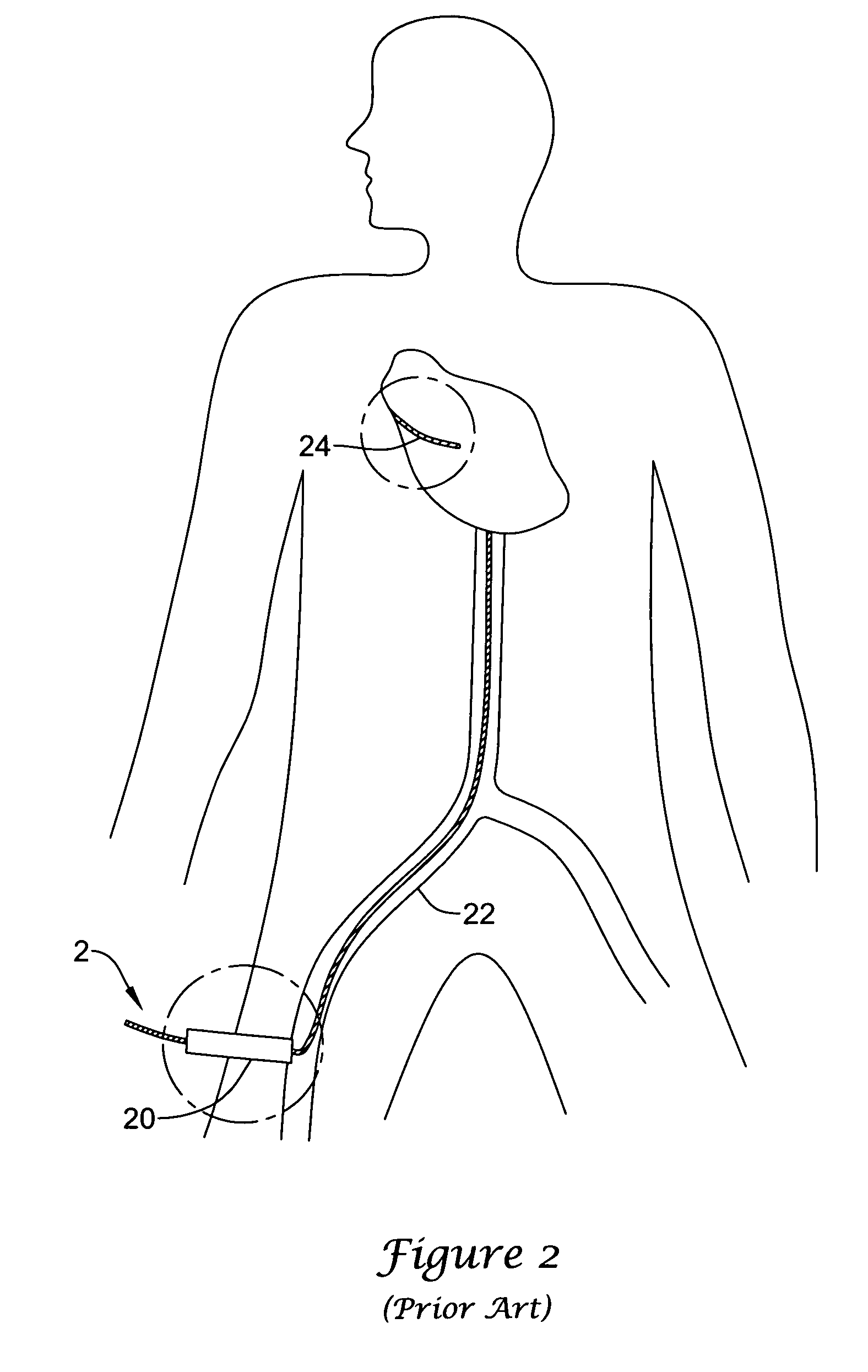Medical instrument with controlled torque transmission
a technology of torque transmission and medical instruments, applied in the field of medical instruments, can solve the problems of inability to predict the location of the hoop stress created by looping or bending of the guidewire, the tendency of the guidewire to whip, and the inability to precisely select the vessel of the bifurcation, etc., to achieve the effect of promoting access to anatomy and reducing the inner diameter
- Summary
- Abstract
- Description
- Claims
- Application Information
AI Technical Summary
Benefits of technology
Problems solved by technology
Method used
Image
Examples
Embodiment Construction
[0018]Low carbon alloy steel, such as stainless steel, has strength and hardness imparted through drawing or extrusion. This hardness is an ideal quality for guidewires as they can be torqued effectively over a long length. A guidewire made from this material is very cost effective as compared to a wire made from elastic alloys such as nitinol. An important factor is the ability of the wire to track and thus create a mechanical pathway through a portion of the human anatomy in order to allow a physician to direct other devices such as catheters to a precise location.
[0019]The ability to track is related to a combination of both pushing and rotating the guidewire. Often placed in a tortuous path, a guidewire cannot effectively transmit torque from the proximal to the distal end in a 1:1 ratio. As the proximal end is rotated, the torsion is stored as energy in the end of the guidewire proximal to the tortuous path. When the threshold is reached where the stored energy overcomes the re...
PUM
| Property | Measurement | Unit |
|---|---|---|
| outer diameter | aaaaa | aaaaa |
| length | aaaaa | aaaaa |
| diameter | aaaaa | aaaaa |
Abstract
Description
Claims
Application Information
 Login to View More
Login to View More - R&D
- Intellectual Property
- Life Sciences
- Materials
- Tech Scout
- Unparalleled Data Quality
- Higher Quality Content
- 60% Fewer Hallucinations
Browse by: Latest US Patents, China's latest patents, Technical Efficacy Thesaurus, Application Domain, Technology Topic, Popular Technical Reports.
© 2025 PatSnap. All rights reserved.Legal|Privacy policy|Modern Slavery Act Transparency Statement|Sitemap|About US| Contact US: help@patsnap.com



